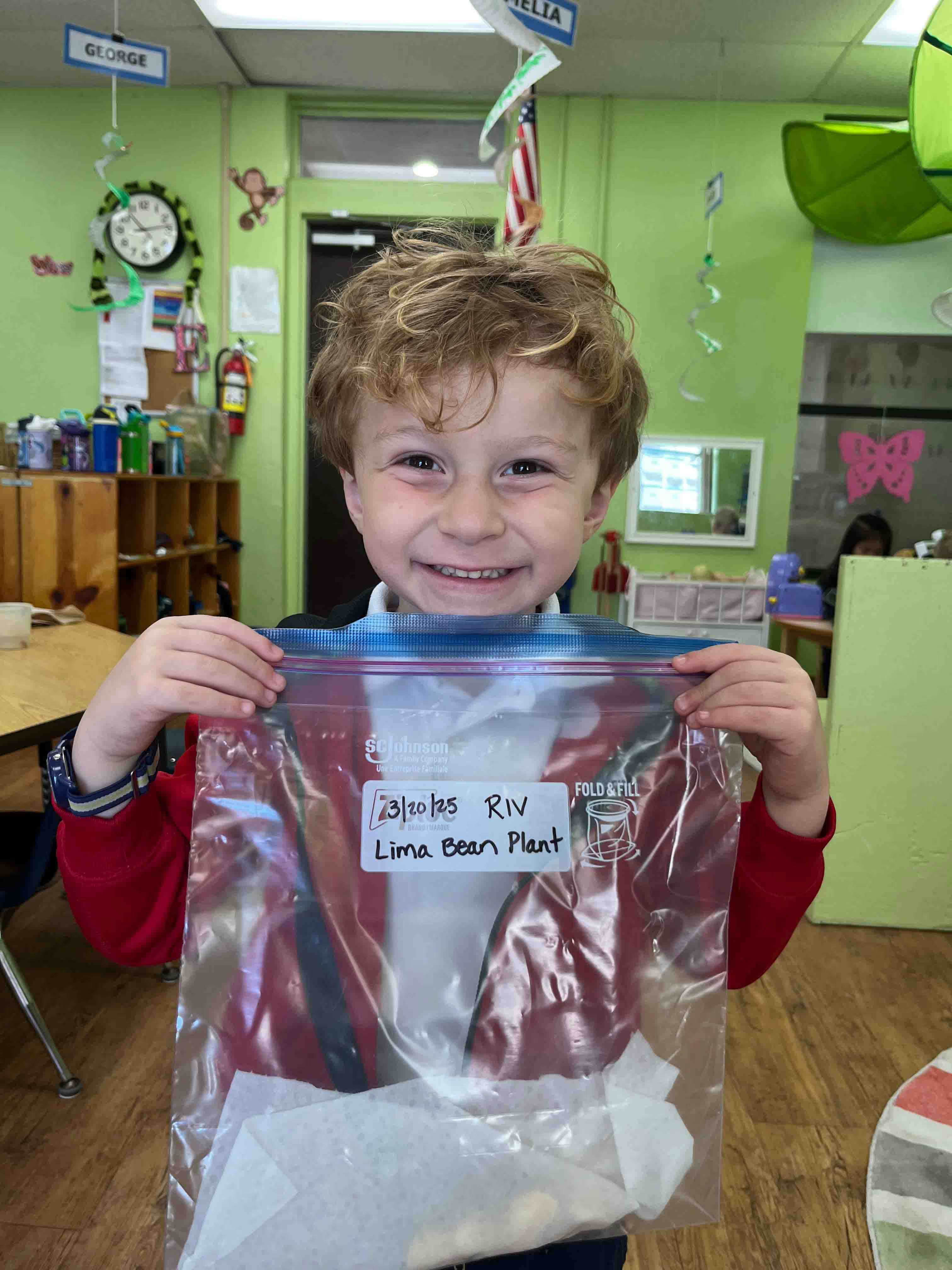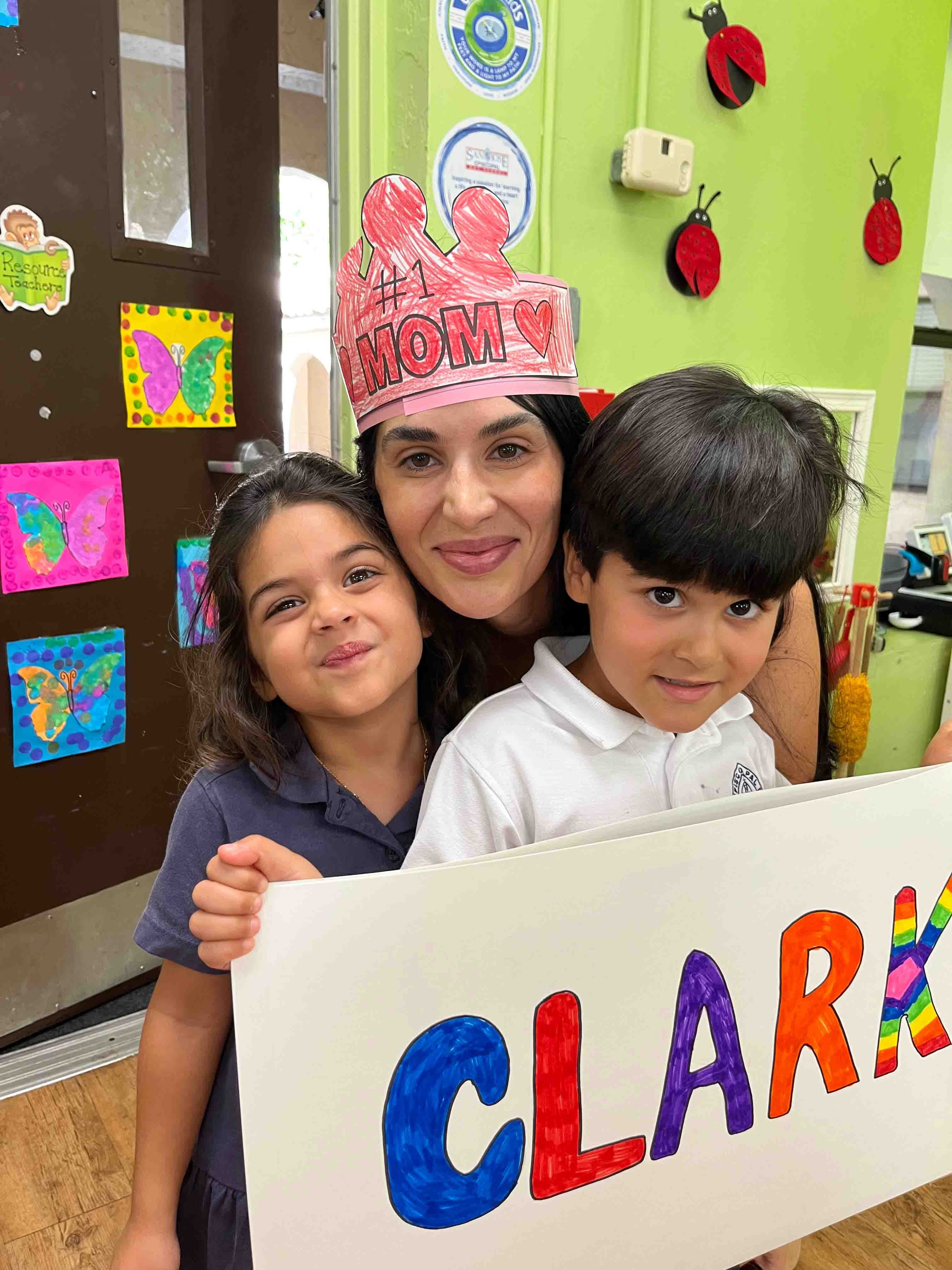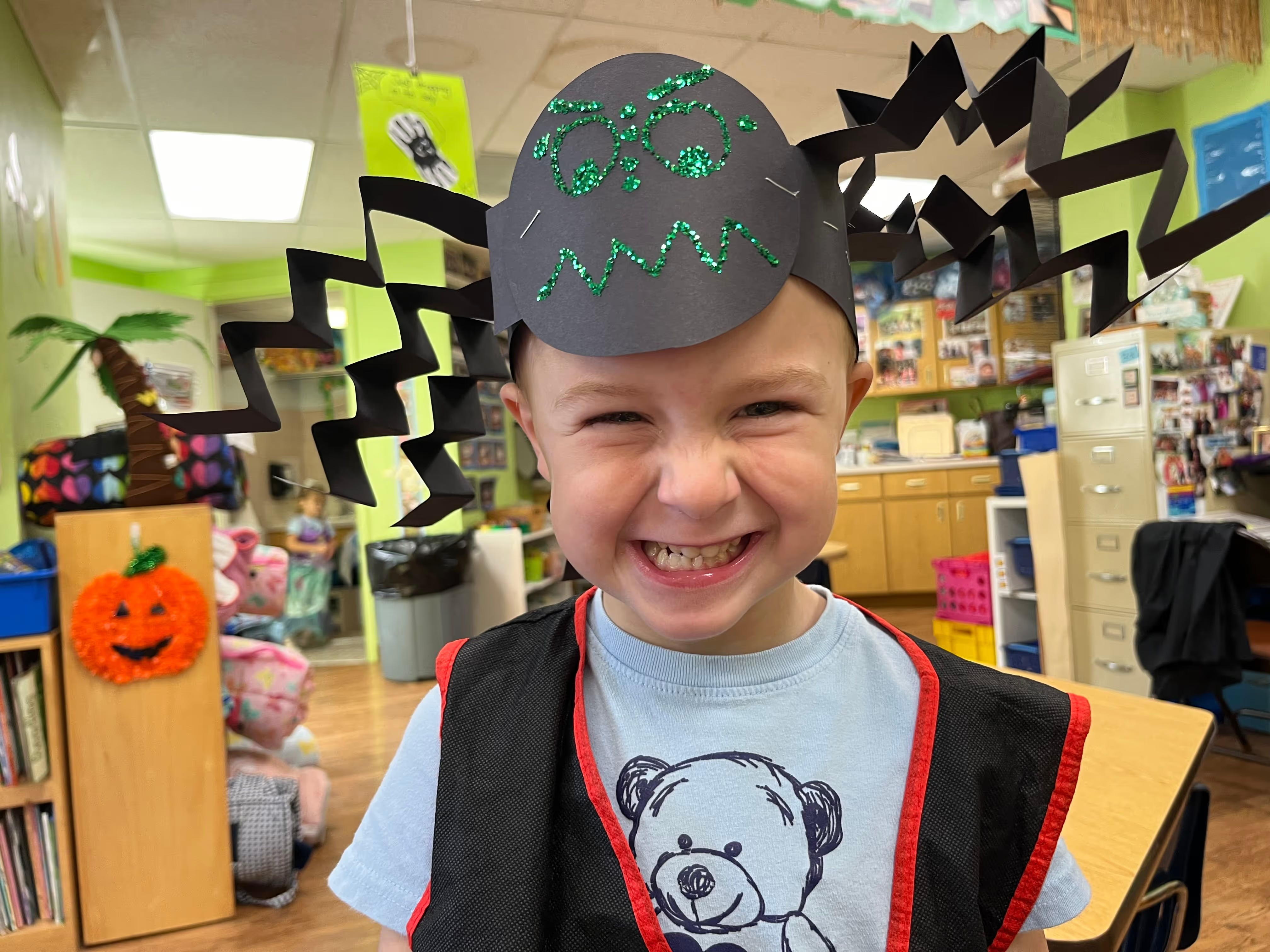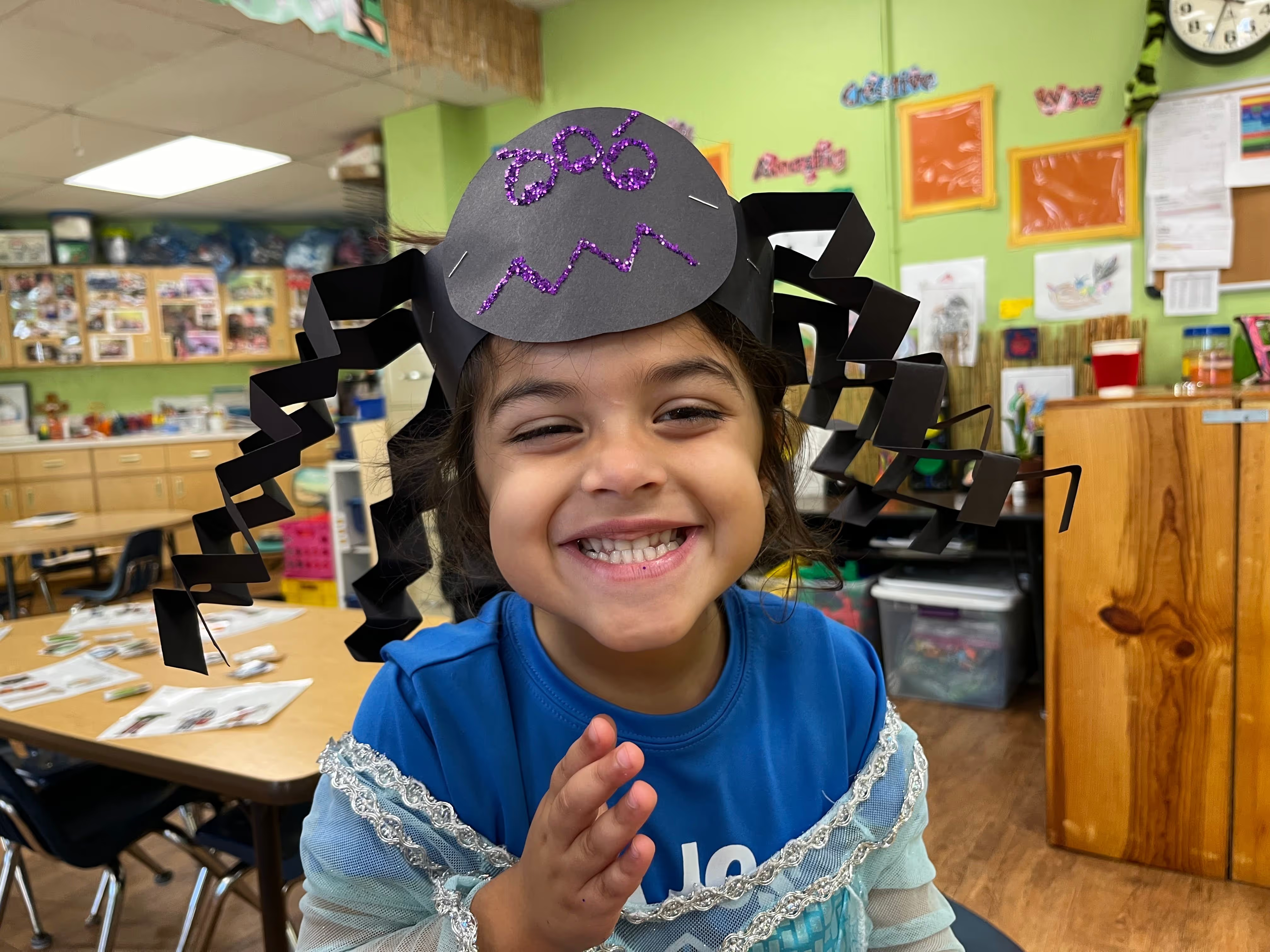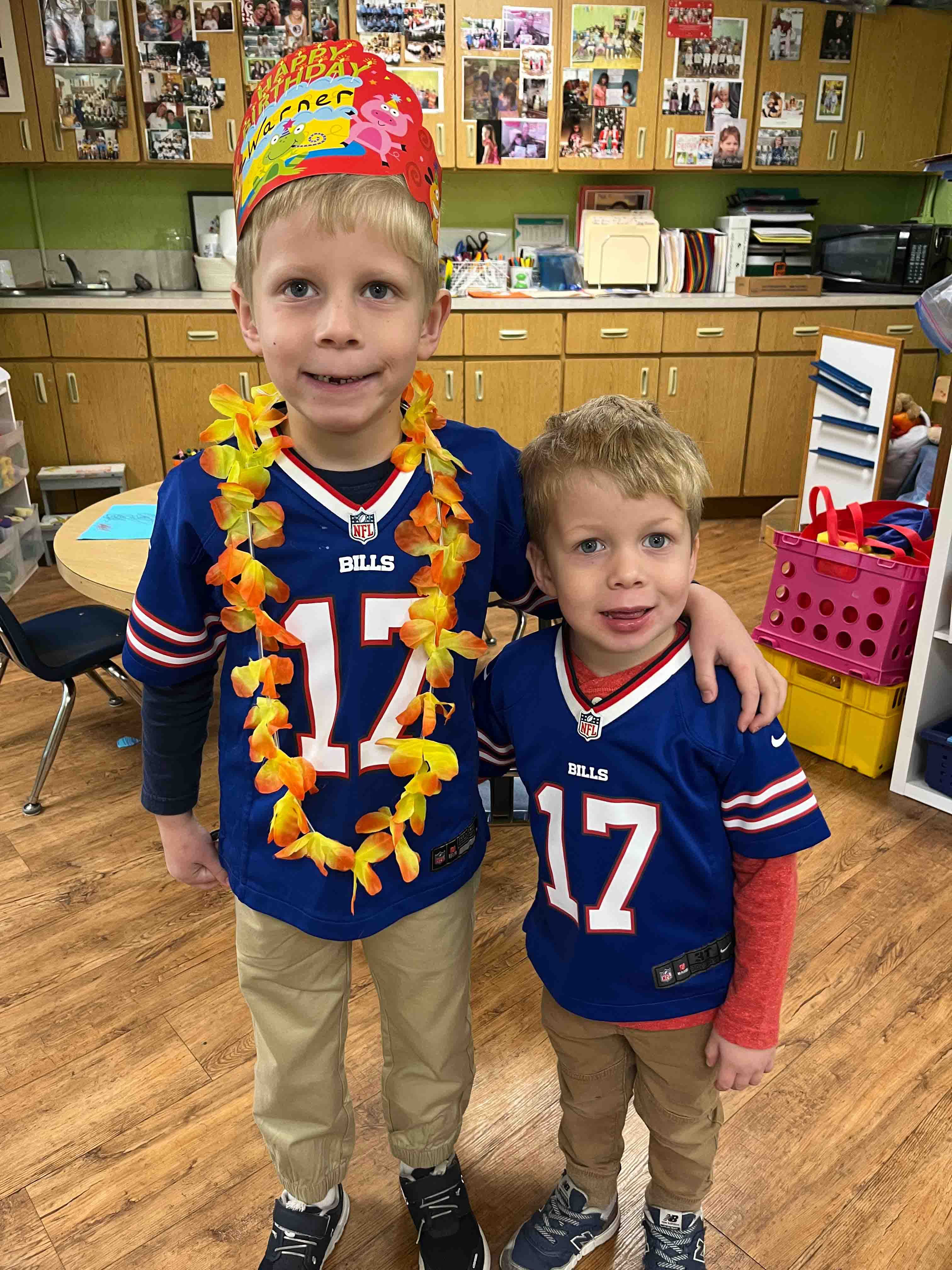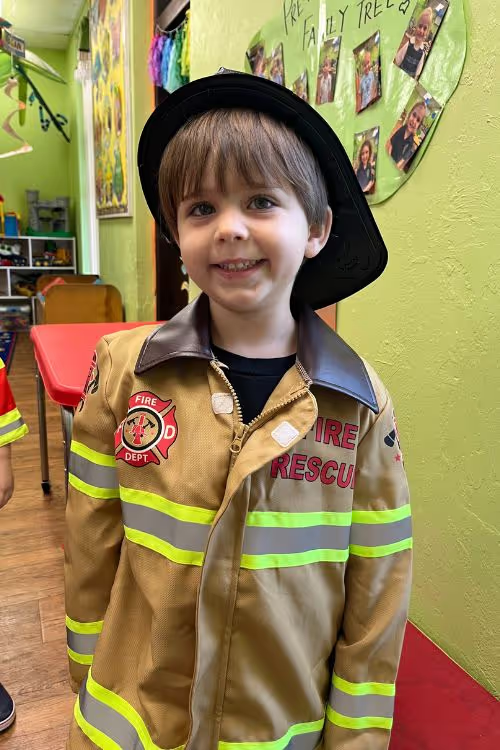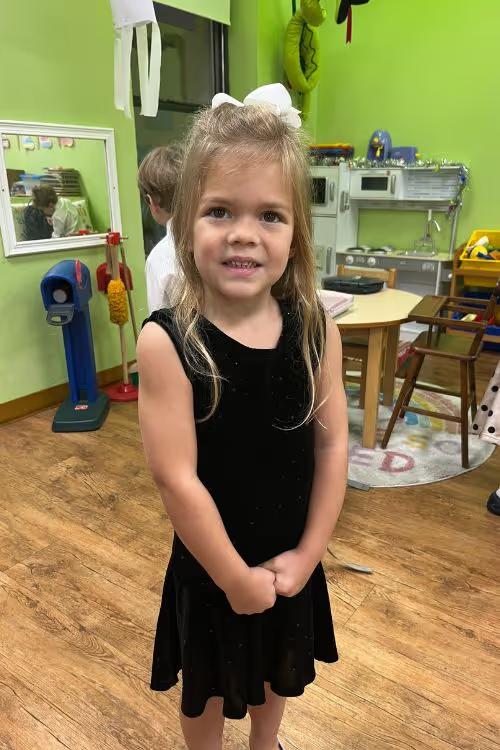
Pre-K3 Curriculum
In our PreK-3 classroom, early literacy takes root through joyful exploration and meaningful experiences that nurture a love for stories, words, and self-expression. Children begin to choose books independently, often curling up to “read” aloud to a stuffed animal or a friend, showing early signs of developing a lifelong affection for reading. As they listen to stories, they make meaningful connections to their own lives, relating the characters’ adventures to family outings, friendships, or classroom experiences. They begin to understand how books work, holding them right side up, turning pages in order, and pretending to read, mimicking the intonation and rhythm of skilled readers.
Curiosity blooms as children ask to be read to again and again, or pause to wonder what certain signs, labels, or words mean. They start to understand that printed words carry meaning and eagerly join conversations about books, pictures, and characters, building vocabulary and comprehension skills. Through songs, rhymes, and chants, they experiment with pitch, rhythm, and volume—laying a playful yet essential foundation for phonological awareness.
As letter recognition grows, children joyfully spot familiar letters in their names and the world around them. Story retellings and dramatic reenactments help them absorb story structure, character motivation, and sequence. Alongside all of this, they are discovering the power of written expression—scribbling, drawing, and creating letter-like forms to represent their thoughts and ideas. Whether they’re “writing” a shopping list, a birthday card, or a recipe in the pretend kitchen, they are learning that writing has purpose and power. Each mark on a page brings them one step closer to becoming confident, expressive readers and writers.
Skills & Understandings:
- Begins to select books for reading enjoyment and reading-related activities, including pretending to read to self or others
- Begins to make real-world connections between stories and real-life experiences
- Interacts appropriately with books; pretends to read, holds book appropriately
- Asks to be read to or asks the meaning of written text
- Participates in conversations that demonstrate appreciation of printed materials
- Listens and matches the rhythm, volume, and pitch of rhymes, songs, and chants
- Recognizes that print conveys meaning
- Recognizes a growing number of letters
- Retells or reenacts parts of a story after it is read aloud
- Begins to show motivation to engage in written expression and appropriate knowledge of forms and functions of written composition
- Uses scribbling, letter-like shapes, and drawings to represent thoughts and ideas
In Pre-K3, early numeracy skills come to life through joyful play, hands-on exploration, and small-group instruction tailored to meet the needs of each learner. Our Mighty Mathematicians build a strong foundation in number sense as they count aloud to ten, construct and compare sets of objects, and explore how combining and taking away items changes quantity—in the context of thematic centers. Pattern recognition and shape matching are introduced through songs, games, and creative tasks that invite students to notice and replicate sequences, sort by attributes, and describe shapes in various sizes and orientations. Through guided exploration, children measure objects using both standard and nonstandard tools, developing an intuitive sense of size, weight, and volume. As they follow simple positional directions and use spatial language to describe where things are, students gain early geometry and mapping skills. Whether building towers, organizing toys, or engaging in group math games, children in our PreK 3 program experience math as a natural, wondrous part of their world—laying the groundwork for confidence, curiosity, and a love of problem-solving that will grow right along with them.
Skills & Understandings:
- Counts aloud and identifies numbers in sequence from 1 to 10 with growing confidence
- Counts sets of objects constructed by the teacher up to five and beyond, using one-to-one correspondence
- Independently constructs and counts sets of up to five objects, sometimes exceeding that number with support
- Adds to or takes away from small sets of objects (up to five) to explore simple concepts of combining and separating
- Recognizes simple patterns with a missing element and completes them by filling in what’s missing
- Begins to copy and extend patterns from a visual or concrete model (e.g., AB or ABB patterns)
- Identifies and matches a variety of shapes, including different orientations and sizes (e.g., small triangle)
- Uses positional and directional words like "on," "under," "next to," and "behind" when following simple directions or describing object placement
- Sorts and classifies objects by characteristics such as size, color, and shape
- Begins to measure attributes of objects, such as length or weight, using both standard (rulers, scales) and nonstandard (blocks, hands) tools with guidance
- Understands and compares small quantities, using words like “more,” “less,” or “same"
- Explores spatial awareness and order, developing early geometry and mapping skills
- Engages in math talk and problem-solving through hands-on play, daily routines, and teacher-led activities
- Demonstrates growing confidence and persistence when solving early math challenges with adult support.
In PreK-3, social studies learning begins with the most foundational concepts—helping children develop an awareness of themselves and the world around them. Teachers create rich, play-based experiences that support children as they learn to recognize themselves as individuals with unique personal gifts, traits, preferences, and roles within the classroom and family. Children begin to understand the importance of routines, classroom rules, and working cooperatively with others. They explore concepts of time through familiar daily sequences and begin to notice changes in the world around them, such as weather and seasons. Through conversations, books, and imaginative play, children are introduced to community helpers, holidays, and symbols like the American flag, all of which plant the seeds of civic awareness. In this setting, our littlest learners also begin using basic location words to describe familiar places and objects in their environment, developing early geographic understanding. These experiences help young learners build a sense of place, belonging, responsibility, and curiosity—essential building blocks for future learning in social studies.
Schedule a Tour
Come see for yourself why SJEDS is an investment in a brighter future.




